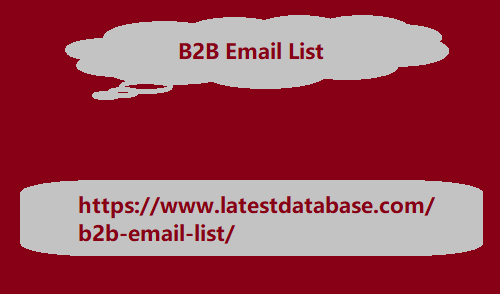Post by account_disabled on Jan 22, 2024 6:59:25 GMT
Sales automation solves many problems in this area. Have you ever lost a deal because you accidentally didn't follow up on it? Or did you manually add leads to your CRM? Or maybe you've been chasing a potential client trying to find a good time for a meeting and spending hours digging through files to find what you need? If you recognize yourself in at least one statement from the above (and God forbid in all of them), you need a sales automation system. In this article, we'll cover why automation is important, what problems it solves, and how to get the most out of it for your business and your team. Sales Management: Why is it important? To close one deal, your salespeople may need 8 to 15 quality contacts with a potential client. It then takes countless hours to build relationships and communicate with clients to keep them happy.
These processes include phone calls, meetings, emails and even text messages. Getting to know the client and their needs, writing notes, collecting data, processing it and following up takes a lot of time. As your list of potential and existing clients grows, managing your data and processes becomes increasingly complex. Account data, sales records, opportunities, salespeople, products, services, prosp B2B Email List ects, existing customers—trying to make sense of all this information leaves most people feeling overwhelmed. And although Microsoft Excel was invented back in 1985, we still see many companies and enterprise businesses using spreadsheets for manual data entry and managing sales processes. Manual data processing is slowly but surely killing your business. Problems that sales automation solves Sales automation creates opportunities to reduce the cost of sales by freeing up time spent on administration and reporting, and generating additional revenue by automating customer interactions in the sales funnel.

But many stakeholders don't realize the value that sales automation can create for a growing number of use cases. About a third of all trading tasks can be automated: Sales strategy and planning : sales forecasting, sales strategy development, resource allocation, employee potential management. By automating routine processes, you free up your employees' time for more important tasks. Lead identification and qualification : sales funnel management, planning work with new and existing clients. You can implement a chatbot that will re-engage prospects stuck in your sales funnel. Formation of pricing policy : establishment of production standards, configuration of technological solutions, negotiations, signing contracts. RFP solutions help reduce the time it takes to write requests and eliminate human error. Order management : credit check, invoicing, related services. Customers will not be confused in payments thanks to automatic invoices. After-sales activities : regular communication, responses to incoming inquiries. A virtual agent or bot can easily handle this task.
These processes include phone calls, meetings, emails and even text messages. Getting to know the client and their needs, writing notes, collecting data, processing it and following up takes a lot of time. As your list of potential and existing clients grows, managing your data and processes becomes increasingly complex. Account data, sales records, opportunities, salespeople, products, services, prosp B2B Email List ects, existing customers—trying to make sense of all this information leaves most people feeling overwhelmed. And although Microsoft Excel was invented back in 1985, we still see many companies and enterprise businesses using spreadsheets for manual data entry and managing sales processes. Manual data processing is slowly but surely killing your business. Problems that sales automation solves Sales automation creates opportunities to reduce the cost of sales by freeing up time spent on administration and reporting, and generating additional revenue by automating customer interactions in the sales funnel.

But many stakeholders don't realize the value that sales automation can create for a growing number of use cases. About a third of all trading tasks can be automated: Sales strategy and planning : sales forecasting, sales strategy development, resource allocation, employee potential management. By automating routine processes, you free up your employees' time for more important tasks. Lead identification and qualification : sales funnel management, planning work with new and existing clients. You can implement a chatbot that will re-engage prospects stuck in your sales funnel. Formation of pricing policy : establishment of production standards, configuration of technological solutions, negotiations, signing contracts. RFP solutions help reduce the time it takes to write requests and eliminate human error. Order management : credit check, invoicing, related services. Customers will not be confused in payments thanks to automatic invoices. After-sales activities : regular communication, responses to incoming inquiries. A virtual agent or bot can easily handle this task.



